Punakha Dzong: Bhutan's Iconic Fortress
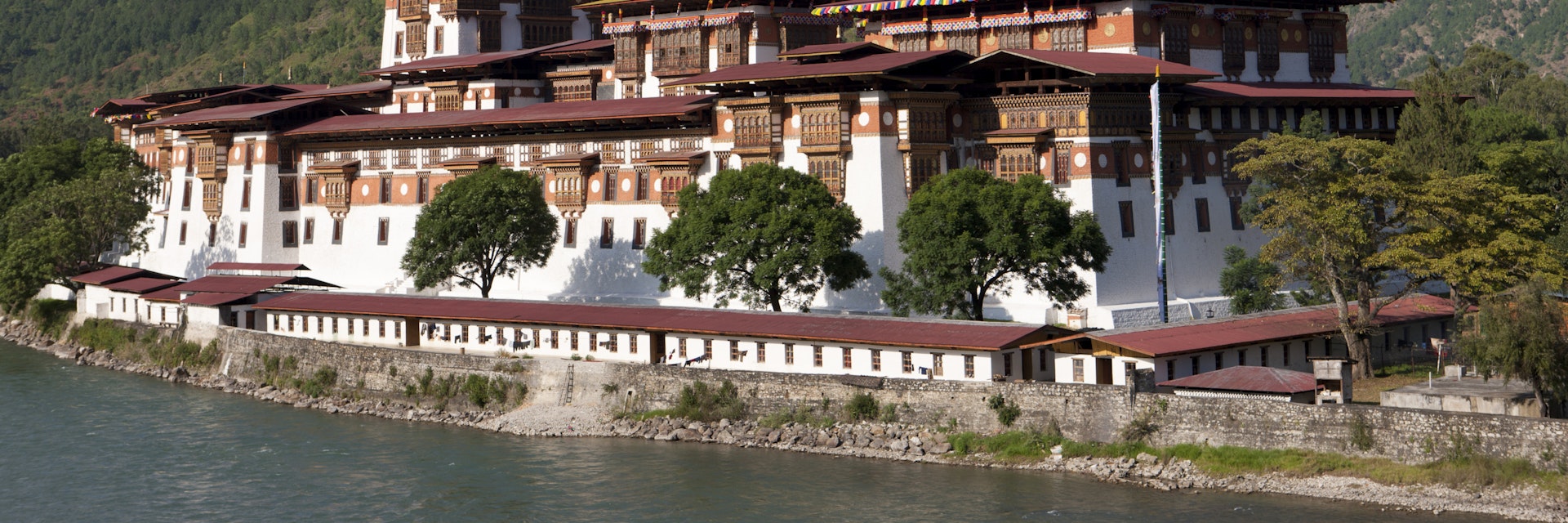
If you're planning a trip to Bhutan, you won't want to miss Punakha Dzong, one of the most iconic fortresses in the country. Situated at the confluence of two rivers, the Pho Chhu and Mo Chhu, Punakha Dzong is a masterpiece of architecture with great historical and cultural significance.
Overview of Punakha Dzong: Bhutan's Iconic Fortress
Punakha Dzong, also known as the "Palace of Great Happiness," is a remarkable structure that serves as a religious and administrative centre. Built-in the 17th century, it is the second oldest and second largest dzong in Bhutan. The magnificent fortress boasts traditional Bhutanese architecture with striking red and gold hues, intricate woodwork, and beautiful paintings. The temple inside the dzong houses precious relics and sacred artefacts.
Surrounded by breathtaking natural beauty, Punakha Dzong is even more enchanting when visited during spring, when the jacaranda trees in the courtyard bloom, displaying vibrant purple flowers.
History and significance of Punakha Dzong
Punakha Dzong holds great historical and cultural importance in Bhutan. It served as the capital and the seat of government until the 1950s, when the capital moved to Thimphu. The dzong witnessed several significant events, including the coronation of Bhutan's first king and the current king's wedding.
One of the most fascinating aspects of Punakha Dzong's history is its strategic location. Built at the confluence of two rivers, it was designed as a defensive fortress to guard against invasions from Tibet. The architectural brilliance of the dzong, with its massive walls and intricate details, is a testament to the ingenuity and craftsmanship of the Bhutanese people.
Today, Punakha Dzong is a religious and cultural hub, attracting locals and tourists. Visitors can explore the grand courtyards, admire the stunning murals, and experience the serene atmosphere of this iconic fortress.
Overall, Punakha Dzong is a must-visit destination in Bhutan, offering a glimpse into the country's rich history, culture, and natural beauty.

Architecture and Design
Unique architectural features of Punakha Dzong
When you visit Punakha Dzong, you will be captivated by its magnificent architecture. This iconic fortress showcases several unique features that make it a masterpiece of Bhutanese architecture.
-
Location: The dzong offers a picturesque setting at the confluence of two rivers, the Mo Chhu (Female River) and Pho Chhu (Male River).
-
White Exterior: Unlike other dzongs in Bhutan, Punakha Dzong is known for its whitewashed exterior, which beautifully contrasts with the lush greenery surrounding it.
-
Woodwork: The intricate woodwork found throughout the dzong is a testament to the superb craftsmanship of Bhutanese artisans. From the ornate carvings on the pillars to the detailed motifs on the doors and windows, every corner of the dzong showcases the rich cultural heritage of Bhutan.
Symbolism and religious significance in the design
The design of Punakha Dzong is steeped in symbolism and holds great religious significance for the people of Bhutan.
-
Central Tower: The central tower, known as the utse, represents the abode of the guardian deity of Bhutan, Palden Lhamo. It is believed that her presence safeguards the nation.
-
Bridge of Enlightenment: To enter the dzong, you must cross an ancient wooden bridge, the Bazam, adorned with prayer flags. This bridge symbolizes the journey from ignorance to enlightenment.
-
Temple of the Blissful: Inside the dzong is the temple of Machen Lhakhang, dedicated to the protector deity of Bhutan, Mahakala. The temple is adorned with stunning murals and statues depicting Buddhist teachings and traditions.
The architecture and design of Punakha Dzong truly showcase the rich cultural heritage and religious beliefs of Bhutan. A visit to this iconic fortress is a visual delight and an opportunity to immerse yourself in the spiritual essence of the country.
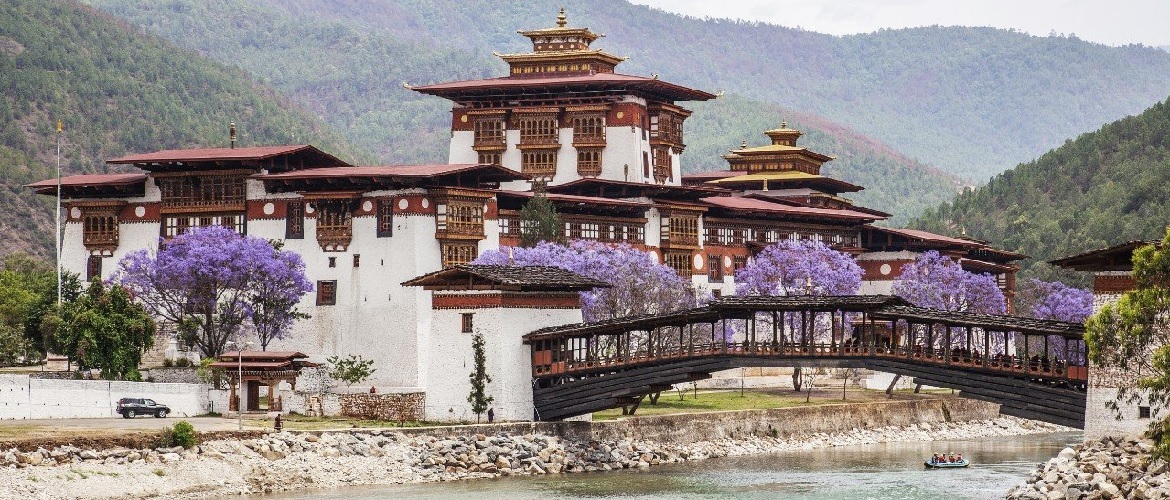
Inner Courtyard
When you visit Punakha Dzong, Bhutan's iconic fortress, you will immerse yourself in a captivating world of history, culture, and architectural beauty. Step into the inner courtyard, and you will be greeted with a sight leaving you in awe.
Description of the main buildings within the inner courtyard
Within the inner courtyard, you will find several main buildings that showcase the rich heritage of Bhutan. These structures are breathtakingly beautiful and serve important purposes in the functioning of the dzong.
-
The Assembly Hall: This grand hall is where important religious and administrative functions occur. Adorned with intricate paintings and elaborate woodwork, the Assembly Hall exudes an aura of reverence and splendour.
-
The White Temple: Standing tall in the courtyard, the White Temple is a tranquil haven where monks and visitors can meditate and seek solace. Its brilliant white exterior symbolizes purity and peace.
-
The Utse: The Utse is the central tower of Punakha Dzong and is a prominent landmark. It houses sacred relics and serves as a symbol of spiritual significance.
Halls and temples housed in Punakha Dzong
In addition to the main buildings within the inner courtyard, Punakha Dzong is also home to several halls and temples that contribute to its magnificence.
-
The Dzong's Great Hall: This vast hall is where religious ceremonies and gatherings take place. Its spacious interior can accommodate many people, and the walls are adorned with intricate murals depicting Buddhist teachings.
-
The Machen Temple: Built in honour of the protective deity of Punakha Dzong, the Machen Temple is a place of worship and spiritual significance. Inside, you will find beautifully crafted statues and religious artefacts.
-
The Guru Lhakhang: Dedicated to Guru Rinpoche, the Guru Lhakhang is a sacred shrine within the dzong. It is adorned with ornate paintings and sculptures depicting the life and teachings of Guru Rinpoche.
Visiting the inner courtyard of Punakha Dzong is truly a journey into the heart of Bhutanese culture and spirituality. Each building and temple within this magnificent fortress tells a story and offers a glimpse into the rich traditions of this enchanting country.
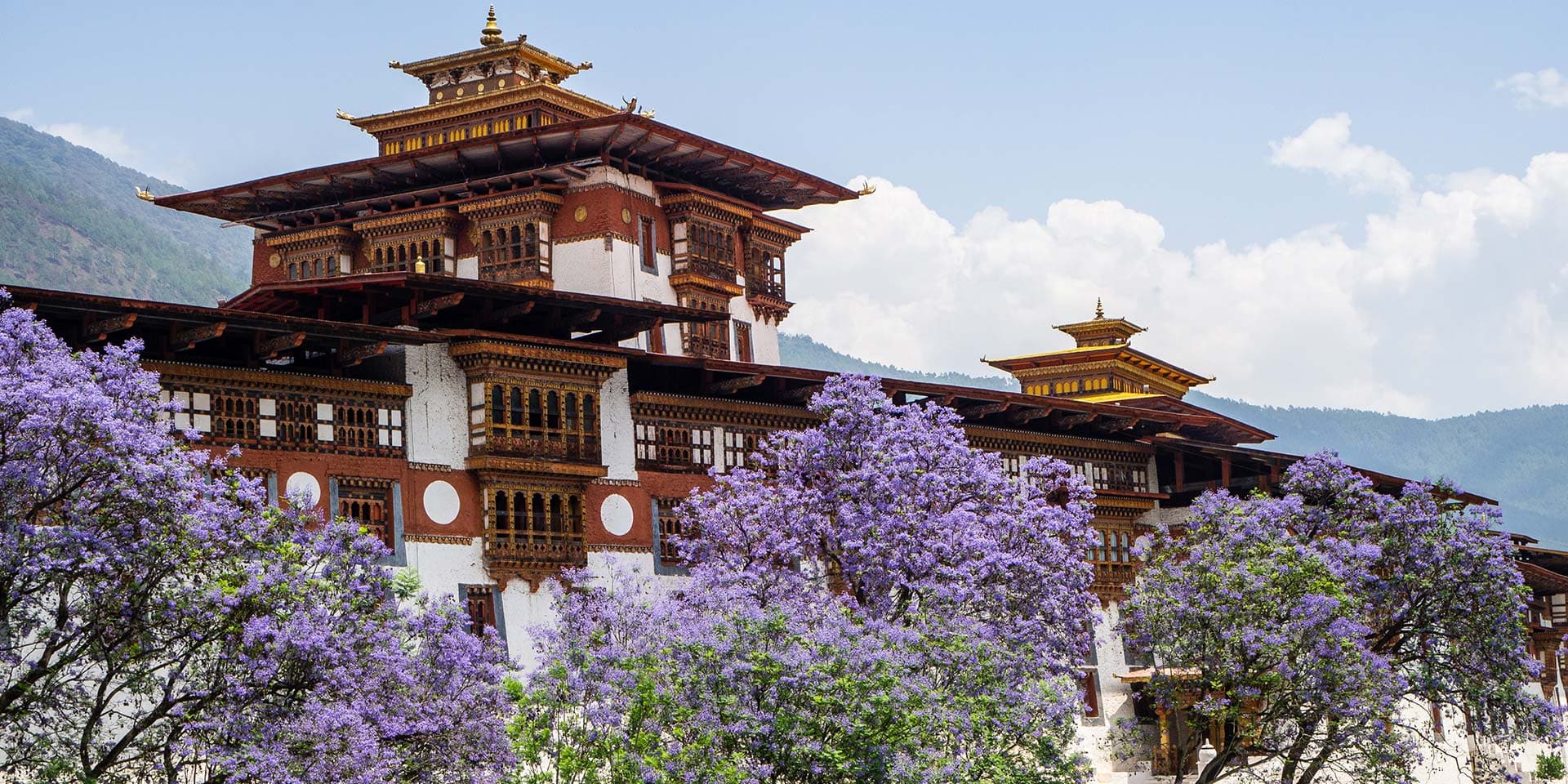
Surrounding Gardens and Landscaping
One of the most captivating features of Punakha Dzong, Bhutan's iconic fortress, is the exquisite gardens and landscapes that surround it. As you approach the dzong, you'll be greeted by lush greenery, vibrant flowers, and well-manicured lawns that create a truly enchanting atmosphere.
Exquisite gardens and landscapes surrounding Punakha Dzong
The gardens surrounding Punakha Dzong are a visual delight. The meticulously designed landscaping showcases Bhutan's rich biodiversity, with various plants, trees, and flowers that add bursts of colour and fragrance to the surroundings. As you stroll through the gardens, you'll come across sacred Bodhi trees, beautiful orchids, and other native flora that contribute to the serene ambience of the area.
The layout of the gardens is thoughtfully planned, with paved paths that allow visitors to explore the different areas at their own pace. You can take a leisurely walk along the banks of the Mo Chhu River or sit on one of the many benches strategically placed throughout the gardens to soak in the tranquil atmosphere.
Importance of nature and tranquillity in the overall atmosphere
The emphasis on nature and tranquillity in the design of the gardens is no coincidence. Bhutanese culture places a strong emphasis on the harmony between humans and the environment, and Punakha Dzong is a reflection of this philosophy. The peaceful surroundings of the dzong create the perfect setting for reflection, meditation, and spiritual contemplation.
Additionally, the gardens serve as a backdrop for various religious ceremonies and events at Punakha Dzong throughout the year. These events, coupled with the serene ambience provided by the gardens, make for a truly memorable experience.
The gardens and landscapes surrounding Punakha Dzong are integral to its charm and allure. The combination of lush greenery, vibrant flowers, and a tranquil atmosphere create a haven of peace and serenity that complements the architectural grandeur of the dzong. Whether you're a nature lover, a spiritual seeker, or simply someone looking for a serene escape, visiting Punakha Dzong's gardens will surely leave a lasting impression.
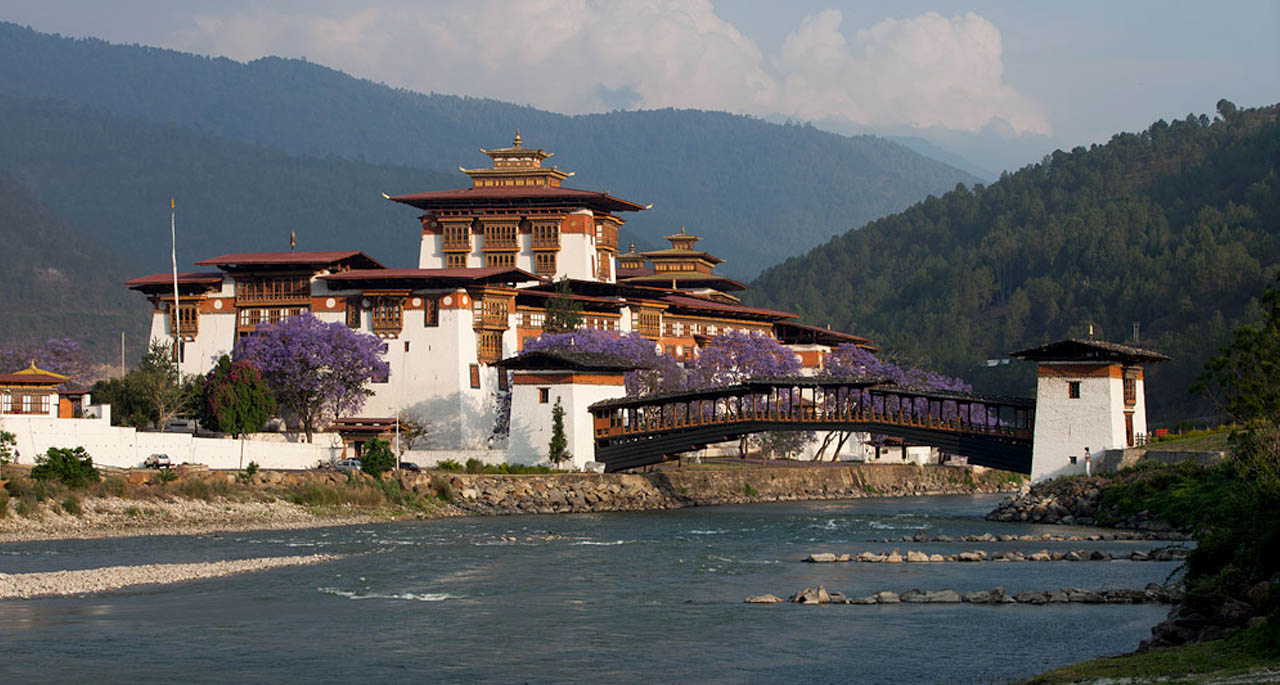
Religious Festivals and Events
Celebrations and religious events held at Punakha Dzong
Punakha Dzong, often called the "Palace of Great Happiness," is a historical fortress and an important centre for religious festivals and events in Bhutan. The dzong hosts several exciting yearly celebrations that attract locals and tourists alike.
One of the most renowned festivals held at Punakha Dzong is the Punakha Tshechu. It is a vibrant and colourful festival celebrated annually in February or March. During this festival, the dzong courtyard becomes alive with masked dances, music, and religious rituals. The locals don their finest attire, and the atmosphere is filled with joy and devotion. The Punakha Tshechu is a wonderful opportunity to experience the rich cultural heritage of Bhutan and witness the traditional dances and performances that depict stories from Bhutanese mythology.
Insights into the vibrant cultural practices
Apart from religious festivals, Punakha Dzong provides a unique insight into the vibrant cultural practices of Bhutan. The dzong is an important venue for various religious ceremonies, including weddings and coronations. These ceremonies are elaborate affairs filled with intricate rituals and traditional customs. Witnessing these ceremonies at Punakha Dzong allows visitors to immerse themselves in the rich cultural tapestry of Bhutan and understand the deep significance of these practices in the lives of the Bhutanese people.
The stunning architectural beauty of Punakha Dzong, combined with the religious festivals and cultural events held there, make it a must-visit destination for anyone interested in experiencing the magic and allure of Bhutanese culture. Whether you are an avid traveller or a cultural enthusiast, a visit to Punakha Dzong promises to be an enchanting and enlightening experience that will leave you with lasting memories of this iconic fortress and the vibrant traditions of Bhutan.
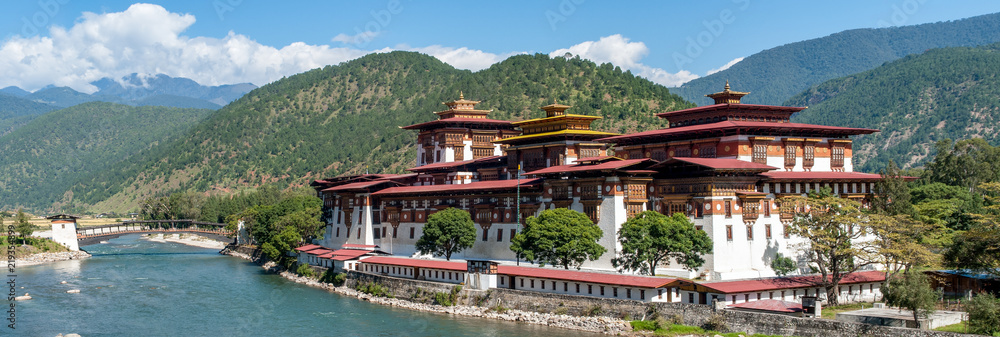
Preservation and Restoration
When you visit Bhutan, one attraction you don't want to miss is the iconic Punakha Dzong. This majestic fortress, nestled between Pho Chu and Mo Chu rivers, holds great cultural and historical significance. Let's look at the efforts to preserve and restore this architectural marvel.
Efforts made to preserve and restore Punakha Dzong
Preserving Punakha Dzong is a top priority for the Bhutanese government. The dzong has undergone extensive restoration projects over the years to ensure its structural integrity and historical authenticity are maintained. Some of the key preservation efforts include:
-
Regular maintenance: The dzong undergoes regular maintenance to prevent wear and tear caused by weather and ageing. This includes repairs to the wooden structures, paintings, and roofs.
-
Traditional craftsmanship: Skilled artisans and craftsmen work on restoration using traditional Bhutanese building techniques. This ensures the dzong retains its original charm and authenticity.
Challenges faced and successful restoration initiatives
Preserving Punakha Dzong comes with its fair share of challenges. The dzong is prone to damage from earthquakes, fires, and floods, which have occurred in the past. However, the Bhutanese government has implemented successful restoration initiatives to address these challenges, such as:
-
Earthquake-resistant measures: After an earthquake in 2011 caused significant damage, seismic retrofitting measures were implemented to ensure the dzong can withstand future earthquakes.
-
Fire safety measures: Strict fire safety protocols, including installing fire detection and suppression systems, have been implemented to protect the dzong from fire-related incidents.
The perseverance and commitment to preserving Punakha Dzong have paid off, as it stands strong as a symbol of Bhutanese culture and heritage. Visitors can experience the architectural grandeur and immerse themselves in the rich history of the dzong.
The preservation and restoration efforts made to maintain Punakha Dzong's grandeur and historical significance are a testament to Bhutan's commitment to its cultural heritage. By ensuring the dzong remains structurally sound and true to its origins, visitors worldwide can continue to appreciate its beauty and connect with Bhutan's rich cultural legacy.
Visitor Information
Visitor guidelines and protocol for visiting Punakha Dzong
When planning to visit Punakha Dzong, visitors should be aware of a few guidelines and protocols. These are in place to ensure this iconic fortress's preservation and respect the religious and cultural significance it holds for the people of Bhutan.
-
Modest Attire: Dress modestly when visiting Punakha Dzong. Both men and women should cover their shoulders and legs. Avoid wearing revealing clothing or hats inside the dzong.
-
No Photography or Videography: There are strict regulations against photography and videography inside the dzong. Visitors should refrain from taking pictures or filming within the premises.
-
Silence and Respect: Maintain a respectful and quiet demeanour during your visit. Remember that Punakha Dzong is an active religious site, and visitors should be mindful of their actions and conversations.
-
Remove Footwear: Visitors are required to remove their footwear before entering the dzong. It is customary to leave shoes at the designated areas or racks.
Accessibility, timings, and entrance fees
Punakha Dzong is located in Punakha Valley, approximately 72 kilometres from Thimphu's capital. The fortress is easily accessible by road, and regular bus services and taxis are available for transportation.
The dzong follows specific timings for visitors. It is typically open from 9:00 AM to 5:00 PM, but checking the exact timings before your visit is advisable. It is recommended to allocate at least 1-2 hours for exploring the dzong and its surrounding areas.
Entrance fees may apply for visiting Punakha Dzong, which contributes to its maintenance and preservation. These fees may vary for international tourists, Bhutanese citizens, and SAARC nationals. Inquiring about the current entrance fees while planning your visit is advisable.
Punakha Dzong is a remarkable Bhutanese architecture masterpiece with great cultural significance. Following the visitor guidelines and being respectful during your visit fully allows you to appreciate this iconic fortress's beauty and serenity fully.
